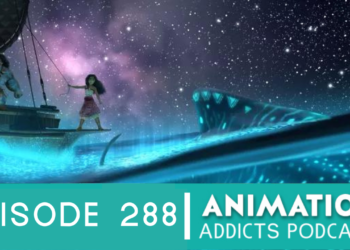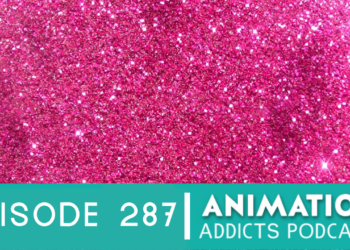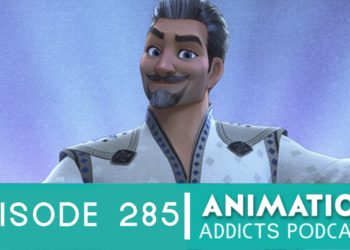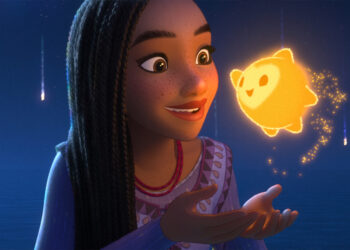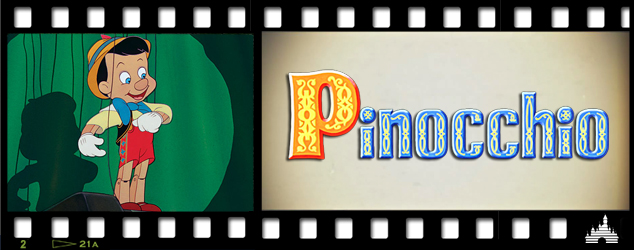
Where was Walt Disney’s animation studio in late 1937? The year that Pinocchio had begun pre-production, hot on the heels of the success of Snow White and the Seven Dwarfs? The sky was truly the limit for the medium; Walt Disney and his crew had burst several doors open. They single handedly proved skeptics wrong, and that roughly 80 minutes of animation could not only keep audiences interested but move them to tears and make them laugh. Most importantly, they passionately told a great, heartfelt, resonant story.
Walt knew, in order to advance the art and his studio, he had to tell a story that would captivate the audience but also feel like it wasn’t trying to repeat the feats they achieved with Snow White. Snow White was not only such a massive commercial success, it was a critical darling, some—including filmmaker Sergei Eisenstein—even reportedly went as far as calling it the greatest film ever made. Animation mastermind Brad Bird once said, “When Snow White came out, it was at the forefront of cinema, not just at the forefront of animation.”
So… How do you top dwarves?
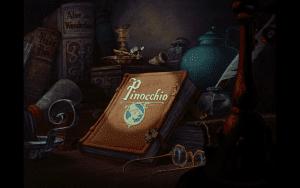
At one time, Disney was going to move forward with a story that wasn’t a fairy tale fantasy—an adaptation of Felix Salten’s Bambi: A Life in the Woods. Eventually, Pinocchio had surged ahead in development and would ultimately become Walt Disney’s second full-length animated feature. Though Pinocchio is very much a fantastical story like Snow White, it is a much different film in terms of its narrative, its structure, and even its tone.
Beginning on a starry night in a mountainside Italian village, Pinocchio follows the adventures of the titular puppet and his quest to become a human being. The very human being that his creator, the elderly, sweet toymaker Geppetto, wishes he could be. Geppetto wishes upon a bright star that his newest creation would become the child that he never had. Due to his good deeds over the decades, a blue fairy grants Pinocchio life, but as an anthropomorphic puppet. Traveling cricket Jiminy Cricket (voiced by a boisterous Cliff Edwards, a then very famous singer best known for his Ukelele Ike act) agrees to become the puppet’s “conscience” and help him achieve his goal. Pinocchio must be truthful, courageous, and unselfish in order to become a real boy.
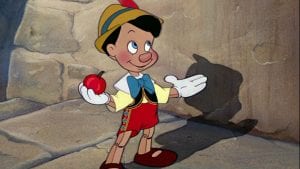
Walt and his crew knew that in order to make Pinocchio and his journey believable, Pinocchio realistically had to be like a child. Pinocchio isn’t some ideal little boy; he is prone to make mistakes, sometimes gleefully. One can argue that he is truly the villain of his own film, in that he can be his own worst enemy. This is a striking contrast from Snow White, where our villain—the Evil Queen—is clear cut right from the start of the film. Pinocchio’s antagonists, from the greedy and flamboyant gypsy puppeteer Stromboli to the terrifying and sinister Coachman of Pleasure Island, are more like symbols for the dangers of the temptations Pinocchio is warned about.
There is no quest to stop a bad guy nor is there really a simple linear plot. The film follows Pinocchio’s encounters with various faces and everything he gets himself into. It makes the picture a little more episodic than the very straightforward Snow White, and it’s certainly a far cry from many post-Walt films. The film keeps the focus on the titular character and the various situations; we only see Geppetto and his animal companions twice between the scene Pinocchio leaves for school and the scene where we see him inside Monstro the Whale—in the film’s third act! Walt kept it streamlined in order to keep the story enthralling.
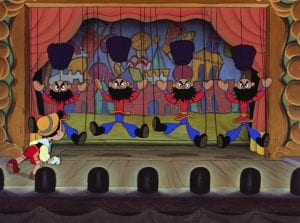
Like Snow White, the filmmakers don’t hold back on the harsher and darker elements. The wooden-head doesn’t just get into trouble; he gets into serious trouble. Pinocchio’s capture by Stromboli is quite intense and ends on a lonely, almost bleak note. There’s the threat of being chopped up into the firewood too, a quite unpleasant image not dissimilar to the Queen wanting the huntsman to cut Snow White’s heart out and bring it to her. The Pleasure Island stretch of the film is legendary, as its horrific climax has scared adults as much as it has scared young children. It rivals, if not tops, Snow White’s run through the forest and Fantasia’s Night on Bald Mountain segment, among other frightening Disney moments.
A lot of modern critiques and think pieces on Disney and animation in general these days tend to fall into this trap. The writers have this strange and unfounded assumption that the Disney studio of the late 1930s and early 1940s was only making simplistic, “children’s” entertainment. Walt himself actually argued that he aimed his pictures at audiences, not a specific age group, on top of deeply caring about the art form and taking the audience seriously. Writers then say that the Walt films just weren’t much to write home about, and that animated features made during and after the so-called “Renaissance” of the late 1980s and early 1990s boasted “more adult” stories that were “complex” and more sophisticated.
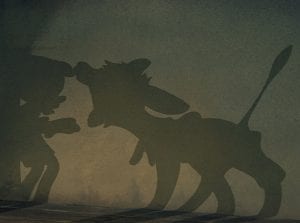
It makes this writer wonder: did they even watch Walt’s films? If they did, did they even pay attention? Pinocchio has many emotional layers, a very textured story it is, and suitably epic too. Disney amped up all the emotions in the film; the happiest moments are very joyful and warm, but the more upsetting moments don’t hesitate to do their work. The idea of boys being turned into donkeys who can no longer speak and are shipped off to salt mines where they’ll never see their families again is borderline depressing and made even worse by the sequence where Lampwick—a rule-breaking youngster whom Pinocchio meets on Pleasure Island—transforms into a donkey. Geppetto’s search for his son brings the audience to tears, as does the finale where Pinocchio “dies.” Edge-of-your-seat thrills are brought by the climactic chase across the ocean, showing just how incredible action could be in the medium, maybe even more so than in a live-action film. In 1940, you got the real deal with animation, and you still do— even in a day and age where live-action routinely uses animation and vfx trickery to pull off thrilling action.
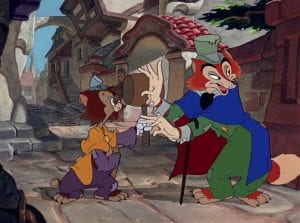
Pinocchio isn’t perfect himself, as mentioned earlier. Though he means well, he easily gives into temptation in the first act and despite what Stromboli puts him through, he still makes the wrong decisions and lies to the very force who can free him. He continues to do bad things, and even Jiminy Cricket himself trips up. There may not be a ton of subplots that we now see in modern animated films, but it doesn’t need them for Pinocchio succeeds due to its passion and its honest storytelling. At the same time, the Disney artists and animators have absolute fun with their work, making for a highly entertaining experience.
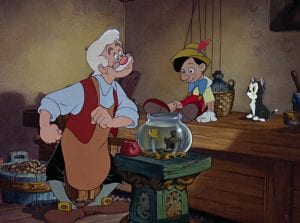
Using the tools that made Snow White work so well, the storytellers knew that—in addition to strong character development—making the emotions palpable was highly important; the more delightful the happier moments are, the more effective the contrasting darker moments are. The comedy beats are nailed, as are various sight gags. Jiminy Cricket, Geppetto, and Figaro get a lot of great comedic scenes. Even some of the villains get humorous moments, like Stromboli keeping his firecracker rage in check when things annoy him or Foulfellow’s dimwitted sidekick Gideon. Though not really a musical from start to finish, a lot of Pinocchio’s songs are upbeat and energetic, from the marching band glee of ‘Hi-Diddle-Dee-Dee’ to the immediately catchy thumper ‘Give a Little Whistle’. ‘When You Wish Upon a Star’ is anthemic and heartwarming (“Pretty, huh?”), and ‘Little Wooden Head’ is a sweet but never cloyingly sentimental number, bolstered by the animators showing off their talent with the various music boxes and toys in Geppetto’s workshop. ‘I’ve Got No Strings’, a gradually rising tune, brings a delightfully rowdy and raucous atmosphere to the film’s middle.
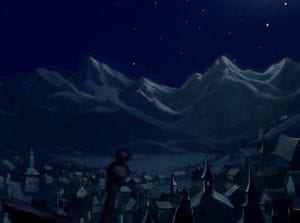
Pinocchio took full advantage of animation, presenting a story whose scope is much wider than Snow White’s. Walt and crew started us off in a big village, taking us to various corners and streets with different flavors; a different sense of character comes through with each location without fuss. Pleasure Island is mysterious, terrifying, unsettling, and tempting all at once. The ocean bed is visually opulent and jaw-dropping, while Monstro’s insides are shadowy and gloomy. It’s a very big, very sprawling story! Everyone pulled out all the stops, from complicated multiplane shots to hand-painted ocean water to tons of astounding amounts of detail injected into a majority of the film’s frames.
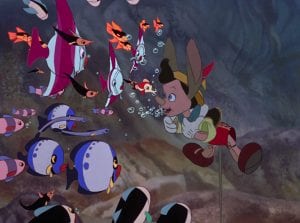
What’s even more fascinating is that like any great Walt Disney film, it is without any superfluous sequences. Despite the story’s size, it runs at a perfectly-paced 88 minutes. Never feeling short, and feeling just big enough, the film shows that the man knew pace like no other.
Pinocchio is and was high point for feature animation as a visual and storytelling medium; it is also the Disney studio at its apex. A time when they could really burst the doors wide open for the medium and show audiences what it could do in the world of cinema. World War II, which had begun in Europe when the film was nearing completion, halted the Disney studio’s upward climb. Pinocchio was a box office flop upon release but a big critical success. Its storytelling wizardry has made it the hit it deserved to be in later years, during theatrical re-releases and home video releases.
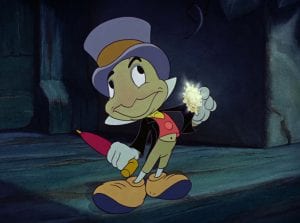
The film is, plain and simple, the perfect example of the Disney studio’s storytelling prowess, from its heart to its adventure, from its compelling characters to its many settings, from its drama to its humor, from its bite to its beauty. It’s the whole shebang.
What are your thoughts about Pinocchio? Comment below!
Edited by: Kelly Conley


